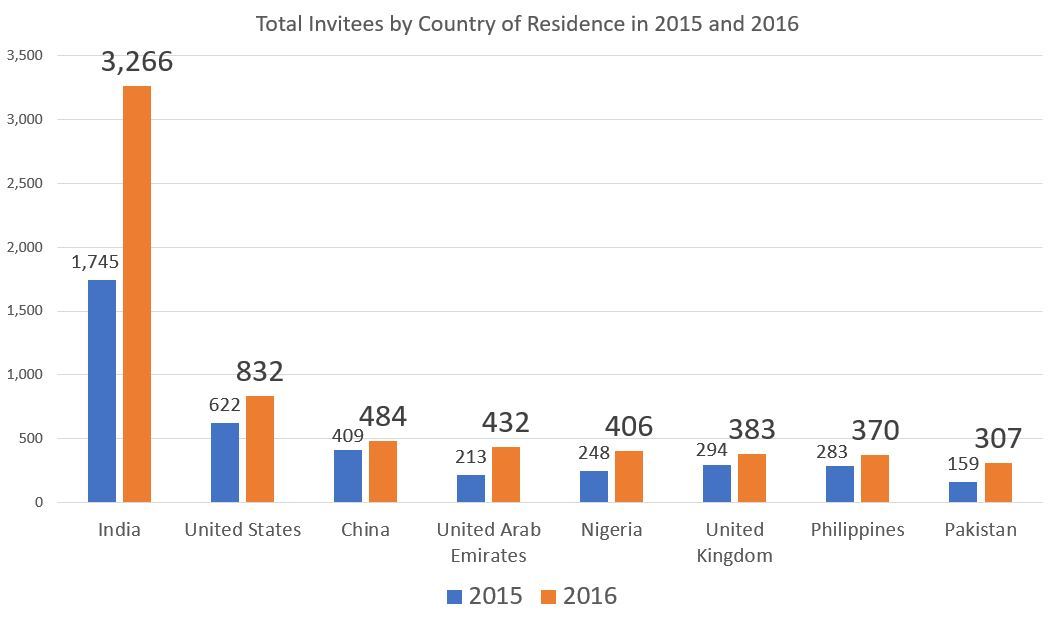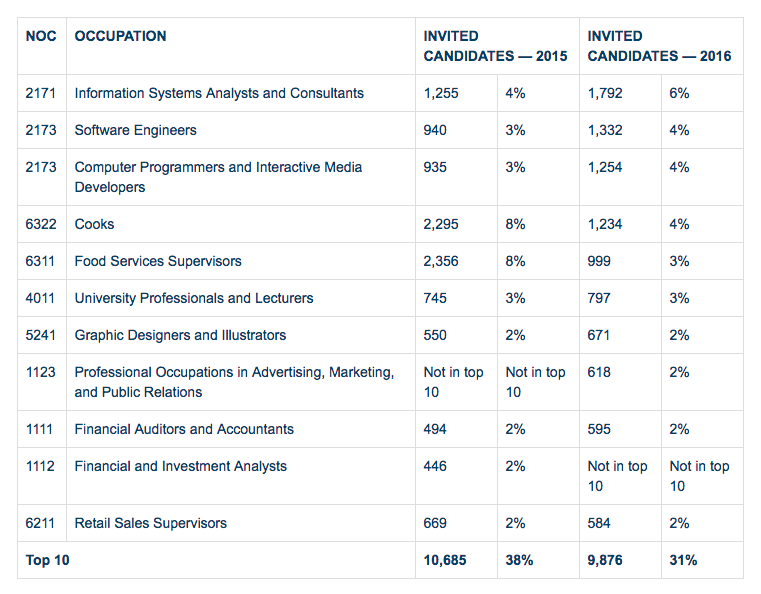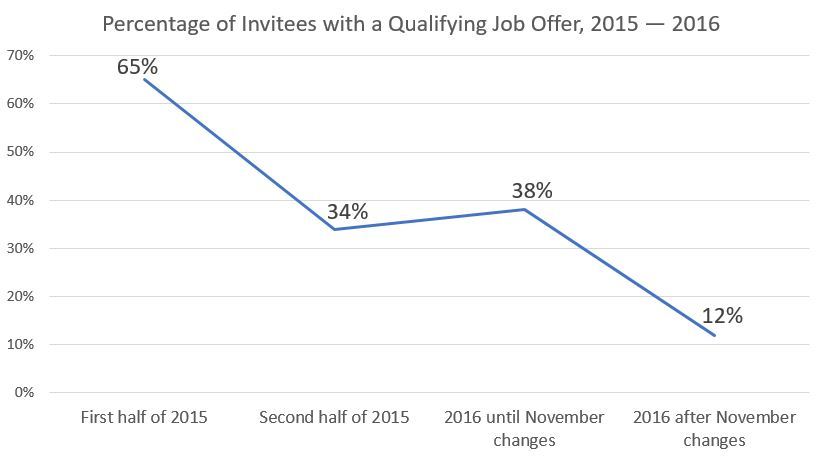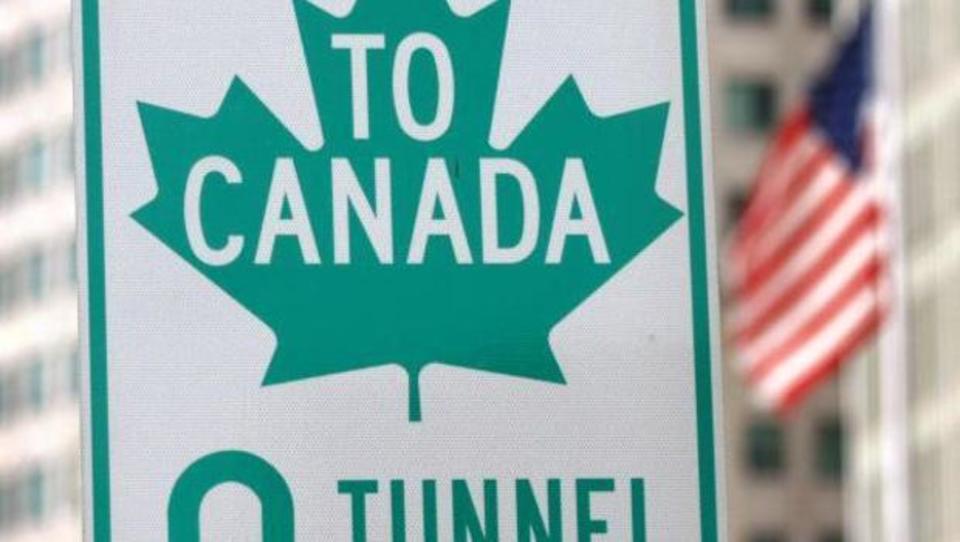Occupation distribution among invited candidates also changes significantly
Immigration, Refugees and Citizenship Canada (IRCC) has published its Express Entry year-end report for 2016, showing that more candidates residing outside Canada were issued an Invitation to Apply (ITA) for permanent residence in 2016 than in 2015. Moreover, IRCC has stated that the countries of residence among invited candidates is likely to continue to diversify throughout 2017 as the Comprehensive Ranking System (CRS) cut-off threshold decreases even further.
In 2015, 78 percent of invited candidates were residents of Canada. However, this proportion decreased to 69 percent throughout 2016. In 2015 and 2016, Canada was the main country of residence among invited candidates because of the high number of temporary foreign workers with a job offer that wished to settle in Canada permanently.
However, this may all be read in the light of changes made to the CRS by IRCC in November of last year. Of the 27 draws from the pool that took place last year, 24 took place before these changes came into effect. As such, most of the data for 2016 covers a period before these changes — which included a reduction in the number of CRS points awarded for a job offer — were introduced. According to IRCC, ‘these changes have helped to attract top talent in the world.’
IRCC’s report alludes to these changes having had an effect on the occupations and place of residence of invited candidates. However, given that they were introduced late in 2016, the changes are more likely to have an effect throughout 2017, diversifying the range of invited candidates even further.
Indeed, over the opening four months or so of 2017 there has been a dramatic increase in the number of ITAs issued, with more candidates having been invited so far this year than in the entirety of 2016. Over this time, the CRS cut-off threshold has decreased accordingly, to its most recent cut-off point of 415. Therefore, and taking IRCC’s projection of a more diverse range of candidates being invited as the CRS threshold goes down, it may well be the case that more candidates outside Canada have received an ITA so far in 2017 than in the whole of 2016.
The table below, which includes the top eight countries of residence among invited candidates other than Canada, shows that each country in this group has seen more of its residents obtain an ITA in 2016 than in 2015.

It should be noted that the above table represents only 21 percent of all ITAs issued in 2016, and that thousands of ITAs were also issued to residents of other countries around the world.
Aside from place of residence, the report also delves into the occupations of invited candidates. The report says that the changes introduced last November ‘rebalances the CRS and allows for more highly skilled candidates to receive an ITA,’ which has led to a more equitable distribution of occupations among invited candidates than was previously the case.
In 2015, the top 10 invited occupations represented 38 percent of all invited candidates, with 16 percent of all invited candidates being cooks or food service supervisors. However, in 2016, the top 10 invited occupations represented 31 percent of all invited candidates, and the picture was somewhat different.
From IT to ITA
Over 2016, IT workers around the world brought their A-game to Express Entry, resulting in many more of them being issued an ITA than in 2015. In doing so, they shot up the rankings to overtake workers in the food industry. IRCC states that workers in occupation group service supervisors and specialized service occupations (NOC 63, which includes food industry workers) were ‘more likely to have a lower human capital’ and that ‘only a small number of candidates’ in these occupations have been invited since November.
Information Systems Analysts and Consultants, Software Engineers, and Computer Programmers and Interactive Media Developers together represented 14 percent of all invited candidates last year.
Other workers that benefited throughout 2016 included Graphic Designers and Illustrators, University Professors and Lecturers, those in Advertising, Marketing and Public relations, and Financial Auditors and Accountants. Besides, it is important to remember that 69 percent of all invited candidates in 2016 were in an occupation outside this top 10 list.

Fewer candidates with job offers receiving ITAs
Taking the three comprehensive Express Entry reports published by IRCC together, it can be revealed that, over time, fewer candidates with a qualifying job offer have received an ITA. Consequently, a higher percentage without a job offer have been invited to apply. This trend was already well underway before the changes introduced last November came into effect — and those changes have served to accelerate the trend even further.

Increased diversification
“The range of information and analysis contained in this year-end report shows that 2016 was both a transitional and a breakout year for the Express Entry system,” says Attorney David Cohen.
“In particular, we can see that over time a more diverse range of candidates is getting the opportunity to submit an application for permanent residence. Based on IRCC’s own words, as well as the recent changes to the system and the increase in invitations issued, it is very likely that this diversification has continued into 2017, and will continue into the future. Consequently, individuals and families thinking of immigrating to Canada are encouraged to create an Express Entry profile and capitalize on the opportunity before them.”
The wide-ranging year-end report will be covered in further depth by CICNews.com, which will publish a range of articles covering the different aspects contained therein.
Source: http://www.cicnews.com/2017/04...

